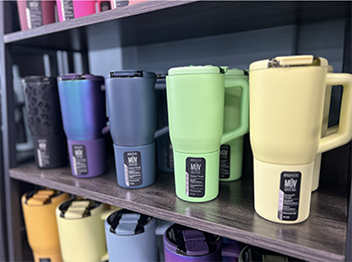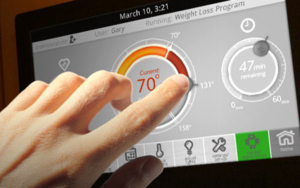
Why Choosing Your Own Electric Supplier Matters When it comes to your Spa in Ohio
Have you recently opened your electric bill only to be shocked at the increase in costs? You’re not alone.
Unless you’re one of few people who are up for a polar bear plunge, a nice, warm pool is typically the goal. A warm pool can be used more throughout the season and even extend the season well into the late summer months and even early fall. It’s relaxing and makes it easy to hop in and get a few laps in, even in the early morning.
There are quite a few methods to keep a pool heated. You can, of course, install electric or gas heaters to heat the water. And, other ways use the sun as a way to collect and keep heat from escaping the pool.
One of the most common ways to keep heat in is to use a cover to protect the water from wind and evaporation which lowers the temperature. There are two kinds of covers made specifically to keep the water warm. There is the physical solar cover, or blanket, which sits on top of the water, or liquid solar covers which are added to the pool water and rise to the top to keep in heat.
Solar covers can change your pool game. Unlike mesh covers, solar covers work not only to keep debris out but to keep water warm and reduce evaporation (which is the biggest cause of heat loss).
All outdoor pools gain heat from the sun. They absorb between 75 to 85 percent of the solar energy that hits the pool.
To keep this heat from evaporating, a transparent bubble cover, or solar cover, can be used. They are UV-stabilized covers that float on the pool water when it’s not in use. Solar covers can raise the temperature of the pool by about 20 °F after being on the pool for a week.
But, while they do a great job of keeping heat in, they are big and bulky. They can be hard to get on and off your pool. The larger the pool, the harder it is.
Instead of heavy physical covers, a liquid pool cover uses a microscopically thin layer of liquid (usually made from alcohol) which can prevent up to 50 percent of evaporation and reduce heat loss. This liquid sits on tops of the water surface. It’s non-toxic and completely safe to swim in. As swimmers splash around, the liquid cover separates, swirls around, and simply moves up towards the surface after the waves calm.

BrüMate keeps your favorite poolside beverage ice-cold, sip after sip.
There are several reasons to consider a liquid solar cover. The first one is, of course, the benefit of keeping your pool water warmer. The molecule-thick liquid keeps water from losing heat because of evaporation. If you rely on a gas or electric heater, you can reduce the amount you use them, because once you heat your pool, the liquid solar cover will keep that heat in for a long time. This may reduce your heating costs and in some areas extend the season so you can use your pool longer into the season.
Aside from keeping heat in, preventing evaporation also saves pool water. You won’t have to add as much water to your pool, and it will stay full longer.
And, of course, liquid solar covers are easy to use. Once a month, just pour the liquid into the pool and you’re set. No putting on or removing a heavy cover each time you want to take a dip.
They do have some cons, however. Liquid solar covers don’t work well in windy conditions. As the wind blows, the liquid will be dispersed and even pulled off the water. This reduces its efficiency and may mean you need to add more, more often.
It’s also crucial that you keep to a strict schedule. Most people will need to add it every month, and it needs to be added on the same day every month. If you can’t keep up with a strict schedule, then a liquid solar cover may not be for you.
If you have a large number of swimmers frequently, the liquid solar cover may not be as effective. Like with the wind issue, you will have to add more to your pool more often if this is the case.
Ready to begin to use a liquid solar cover? It’s a breeze to set up. All you have to do is buy enough for your pool at your local pool supply store. Make sure you grab enough to last at least a couple months. It should cost about $15 to $30 a month, depending on the size of your pool and how much you need to use and how often. Your local pool supply store can help you determine the right amount to put in and how often.
It’s critical that you set up a schedule to add the liquid cover. In order for it to be effective, it has to be added on a regular basis. So, determine what works best for you and don’t deviate.
On your set day, measure out the proper amount for your pool and pour it in. That’s it! The liquid will do the rest. It will float to the top of the water and bind together to make the cover.
If you’re interested in a liquid solar cover and want to learn more about the pros and cons of using this method to keep your pool warm, our team is here for you. Contact Eversole Pool and Spa at 419-221-3494.

Have you recently opened your electric bill only to be shocked at the increase in costs? You’re not alone.

FOR IMMEDIATE RELEASE Eversole Pool and Spa, a trusted leader in the NW Ohio Pool and Spa Industry, is thrilled to announce their plan to

Feeling tired, worn-down, and out-of-whack? You might be in need of a good detox. One of the ways to release excess toxins from the body